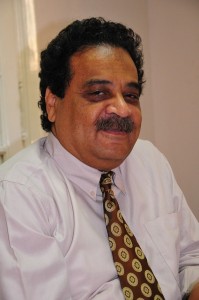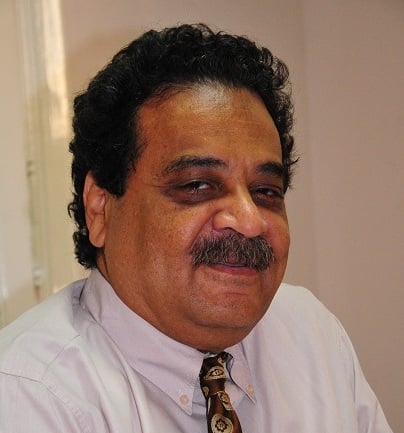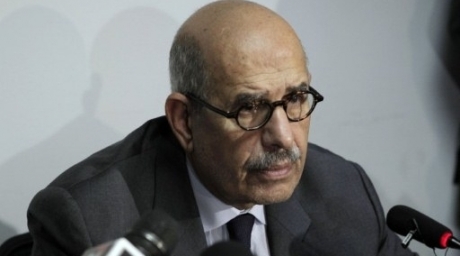
In light of the strategy of fighting terrorism and extremism, regardless of whether you support or oppose this strategy, we all notice that terrorism is expanding. The strategy was widened to include not only armed terrorists but also any one holding the “Rabaa” sign, even if they do not participate in or provoke direct violence. It also includes anyone involved in clashes between protestors participating in protests but who are not of the outlawed Muslim Brotherhood.
Clashes occur often in protests within universities and slums. By clashes, we do not mean fights in which security forces use an equal amount of violence against protestors, but a more severe violence. This was what happened in Matariya, with the death of 20 protesters during the dispersal of riots, something that was not seen before anywhere in the world.
With the increasing demand for the strategy to exercise more force against terrorism, the scope of the anti-terrorism strategy widened to include all political parties and political figures discussing democracy or attempting to slow down this bloody path in which the security forces are walking, while the old Mubarak regime bluntly provokes through the media. It has become clear when this violence transformed from spoken words in the media to real violence after the assassination of Shaimaa Al-Sabbagh.
Al-Sabbagh was not a terrorist nor was she from the Brotherhood, but she was anti-terrorism and anti-Brotherhood. Her death raised big questions for some people who support the strategy of security confrontation due to their hatred towards the Brotherhood. The numbers are increasing with the increasing questions, when the problems escalated into the massacre at the football match in front of the Air Defence Stadium, just a few days following Rod El-Farag incident, which almost turned into a massacre too.
In facing terrorists, even if they were only youth raising the “Rabaa” sign, public opinion demands their death. No matter how much we say that this strategy is not practical even if it was the right one, killing Brotherhood members, who account for 850,000 members (in addition to their family members who make up to 3 million people), is not possible, even if it was the right decision.
Within this strategy, however, killing Al-Sabbagh was not enough. The government could have accused one of her colleagues of killing her. In my own opinion, after the Air Defence Stadium massacre, the confrontation no longer needs to oppress four million people of the Muslim Brotherhood or others. It desires to oppress all Egyptians .
Football fans have also become the target for security confrontation after more than 20 fans were killed by security forces during the dispersal of riots. This was shocking, not only to the people opposing the strategy, but to its supporters as well. As a result, many questions came to light as to the direction of this strategy and its limits.
These questions are threatening the legitimacy of the plan, and I still believe that its adoption was supported by a certain social power, especially the high class of the society which benefitted from Mubarak’s junta as well as the networks of corruption. They want that security back, not for the sake of stability, but for the sake of oppressing people and humiliating them if they were to call for any social demands to improve their lives.
These social classes, however, need the support of another power to follow through with the anti-terrorism strategy – media presenters and politicians. Those are the highest middle class community. This class is characterised generally by conservative views, forming the highest numbers in the silent majority, while its youth were the loudest voice during the 25 January Revolution.
This class is conservative because of its good social state and because it fears that any revolution would shake or disturb its stability. It also has fears that these protests would make societal changes that would come in the way of its benefits. This class wants to protect its interests at any cost possible. As a result, they would be fine with killing a few million Egyptians as long as they are not from the same class or that it would provide stability and security.
They would also support the detention of these protesters. In this regard, I remember telling one Egyptian of this class that traffic officers treat people very badly. He was shocked and strongly denied this, saying that he’s never seen it before. I pointed out that I meant poor people like microbus or taxi drivers or anyone the officers see as a low-income citizen. These citizens are always treated like they are suspects or potential criminals. The man simply told me that they really are suspects and we can only deal with them in that way.
The third social force supporting this strategy is poor people, especially casual labourers who work day by day. These people like to be ruled “by extreme force,” as one of them said when asked about what kind of president he hopes for Egypt.
In explaining this meaning, a taxi driver told me that in Habib Al-Adly’s time, he was paying “what was agreed upon” in the different checkpoints and was being detained in police stations for suspicious or any minor violation, receiving insults and perhaps beatings too; however, his car was not stolen until after the revolution. For him, what is important is that work and the market were going well. The man understood exactly what is required of him, perhaps deeper than politicians: he has to swap dignity for food.
On the other hand, the upper middle class is annoyed at the massacre at Air Defence Stadium, because some of their sons might have been among the victims. They had the same feeling they felt when two informants killed Khaled Said. This makes casual labourers and poor people, who want security and stability, very annoyed.
These classes absolutely do not care if tens or even hundreds were killed; they just care about security, and this exactly is the reason behind their whimper now.
So, the security confrontation strategy, with all its forms, is threatened with the loss of its legitimacy. However, some of its defenders and ironically some of it critics also see that it can be valid, or at least can be improved a lot if some aspects got handled. Is it true? Or is this strategy part of the overall strategy of the Egyptian state at this moment? Or maybe it is part of the overall strategy of all the presidents of the 1952 family?
I believe that answering these questions is essential before discussion on suggested alternative strategies commences, whether towards confrontation or towards dealing with political Islam powers in general or terrorism and fanaticism in particular. Perhaps it makes us know the powers that were supporting terrorism and fanaticism, and still do.
Farid Zahran is a publisher and writer. He is the co-founder of the Egyptian Social Democratic Party



